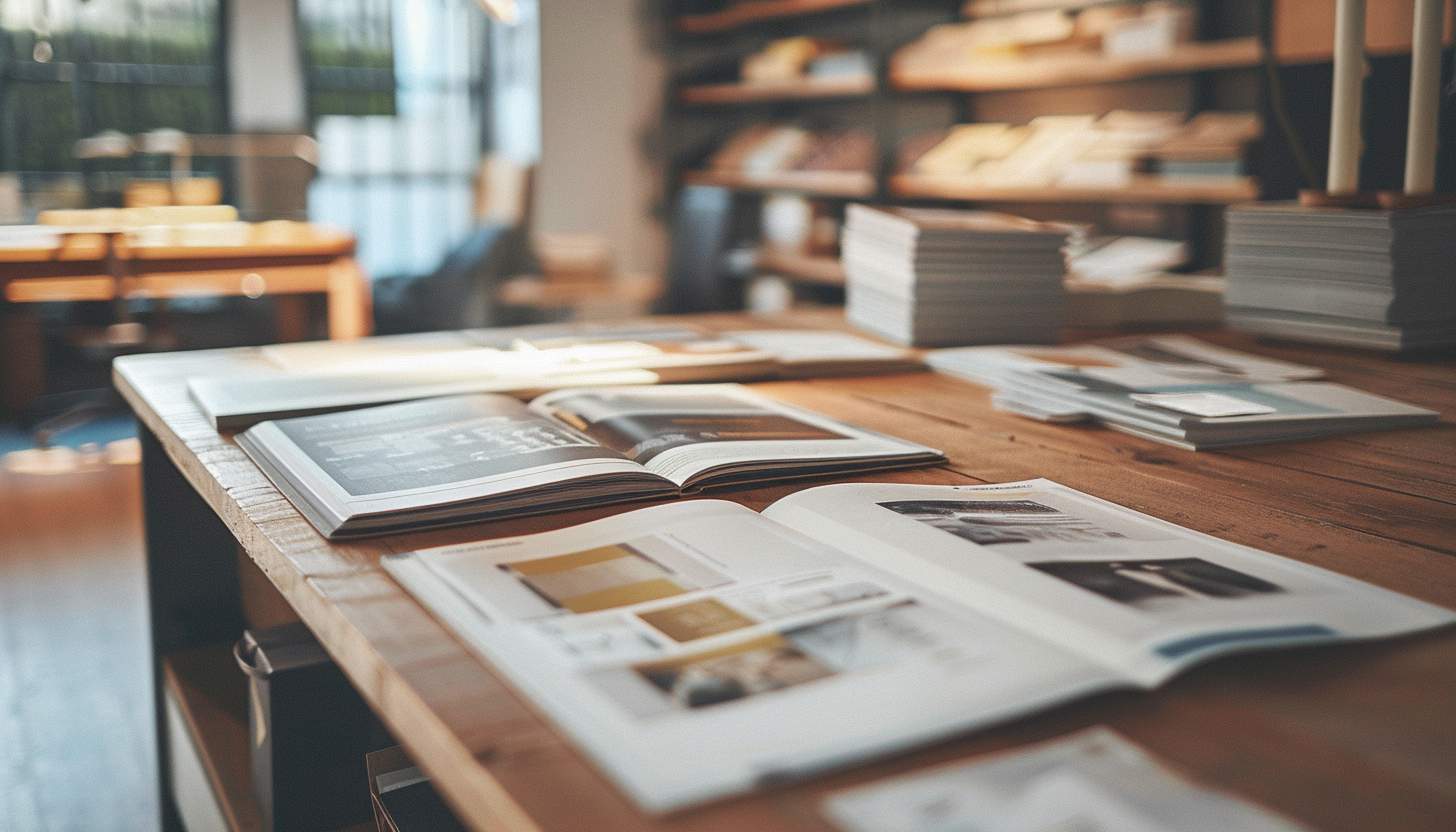Businesses in today’s competitive market need appealing ways to express their message clearly. A brochure is a multi-purpose marketing material aimed at presenting information about products, services, or brands in an attractive and appealing visual format. Whether for promotional purposes, for information, or for branding, brochures help businesses connect with potential customers. This guide explores what a brochure is, its various types, essential design elements, and effective distribution methods. In addition, we will introduce Arvin AI, a powerful tool that simplifies brochure creation by offering AI-powered content generation, image design, and layout optimization, helping you craft professional brochures effortlessly.
Part 1: What Is a Brochure?
An advertisement and informational document, a brochure is normally going to have words, images, and sometimes graphics providing information about a company’s offerings. It aims to inform and persuade the prospective customer in such a manner that they become convinced to take an intended action-buy a product or contact them for more details. Marketing, educational, tourism, and other sectors primarily use brochures. But it can also be very plain in design-just a page flyer-or, on the contrary, it could be multi-page and lead to more detailed data about the goods, services, or events under consideration.
Purpose of a Brochure
A brochure is created for such a purpose:
- Introduce a Company or Organization: It is an introduction to your brand, with key information about your identity, values, and offerings.
- Highlight Products or Services: A brochure highlights your products or services, helping customers understand the benefits and features.
- Provide Detailed Information: Brochures can include comprehensive details that don’t fit on a simple flyer or business card.
- Persuade Potential Customers to Take Action: The ultimate goal of what is a brochure to motivate the reader to take action—whether that means making a purchase, signing up for a service, or visiting a store or website.
Part 2: Types of Brochures
There are various types of brochures, each designed to meet different marketing or informational needs. The correct type would depend on the volume of content, the method of distribution, and budget, among others. Below are what is a brochure and some of the most common brochure types, each with its unique benefits and best-use scenarios.
Bifold Brochures
A bifold brochure is a folded sheet of paper into four panels: two in the front and two in the back. The traditional design has been widely applied for its clarity and readability. Businesses use bifold brochures for company introductions, product highlights, real estate listings, and invitations to events. The panel layout provides ample space for well-structured content and powerful visuals in a professional and uncluttered design.
Trifold Brochures
A trifold brochure is a folded piece of paper from one sheet folded twice and contains six panels, three on the front side and three at the back. It is probably one of the most popular forms of what is a brochure because it creates a perfect balance between compactness and having as much content as possible in it. The segmented format affords businesses the opportunity to present information that would flow easily for the reader from one panel into another.
Z-Fold Brochures
The zigzag style of the z-fold creates six equal panels opening in a very structured, step-by-step sequence. Unlike the trifold that folds inward, the z-fold opens in one continuous, accordion-like layout making it visually engaging and easy to follow. The style is highly useful for showing sequential information like travel itineraries, instructional guides, and service breakdowns.
Gate Fold Brochures
A gate fold brochure has two outer panels that fold inward to form the center point, just like a set of doors opening to reveal the inner content. The gift-like packaging adds surprise, especially for high-impact marketing materials. Businesses commonly use gate fold what is a brochure when they want to create an experience for their product launches, luxury brand promotions, and real estate showcases.
Booklet Brochures
A booklet brochure is a series of pages stapled together, which makes it a mini-magazine or catalog. This type of brochure is best used for a company’s description, product line, or service offerings. Since booklets offer more space than single-sheet brochures, they can have more detailed explanations, high-quality images, and customer testimonials. Though the cost for printing is more, booklets offer a very professional look and carry much more content, hence are quite a good investment for companies that want to leave a long-term impression.
Part 3: Key Elements of an Effective Brochure
For your brochure to speak to your target audience, there are a few key things you need to zero in on. A great brochure not only grabs attention but also communicates its message very effectively. From compelling headlines to strong branding and persuasive calls to action, each component has a role to play in ensuring the success of what is a brochure. Below, we take a closer look at these essential elements in detail.
Compelling Headlines
A brochure’s headline is attention-grabbing and appealing to the reader; it’s like a first impression. The reader should know, right off, what your point is or at least be highlighted to gain maximum benefit from your offering. Therefore, an engaging headline that provides the entire content of a brochure makes it really important to maintain it as concise, interesting, and relevant for your target group.
Engaging Content
Content in any brochure holds the crown; thus, clarity and relevance determine its effectiveness. Keep the text short and the point-to-the-punch type, though not bare: focus on satisfying the needs, pain points, and desires of your target audience. Avoid long paragraphs and use bullet points, subheadings, and short sentences for better readability. A gentle and persuasive tone is perfect, helping the reader connect with you.
High-Quality Images
Images play an important role in the design of what is a brochure. It will add beauty to the visual aspect and will help support the message. Professional photographs with high resolution or graphics can easily present your products or services. Do not use low-quality stock photos or generic ones as it can lower credibility. Instead, select images that match your brand and connect with your audience.
Consistent Branding
In making a pamphlet, strengthen your brand image; it should appear uniform in its design and color, just as your branding overall strategy will want. It has to maintain sticking to the use of the same logos, lettering, among other things including different color schemes within your other campaign materials, website, business card, and the social media platform. Such consistency in designs creates brands and trust since making it relatively easier for interested customers to know and relate with your business more easily.
Clear Call-to-Action
A brochure is always supposed to have a very clear and enticing call-to-action that would instruct readers on the action to undertake. Whether to visit your website, call in for more details, sign up for a particular service, or make a buy, your CTA should always be direct and easy to take. Use bold fonts, contrasting colors, or buttons to emphasize the CTA. This is achieved by the inclusion of contact information, QR codes, or social media links, which facilitate the audience in acting immediately.
Part 4: Designing a Brochure
Design plays a crucial role in ensuring your brochure not only communicates effectively but also looks attractive. A good design captures attention, maintains the reader’s engagement, and strengthens your brand identity. Below are key aspects to consider when designing an effective and professional what is a brochure?
Understanding the Target Audience
Before designing what is a brochure, it’s essential to understand who you’re designing it for. Identifying your target audience helps ensure that the brochure’s content, tone, and visuals resonate with the right people. Consider factors such as demographics, interests, and pain points. A brochure meant for corporate clients may require a formal and professional tone, while one targeting young consumers might benefit from a vibrant and creative design.
Layout and Typography
A much planned layout will let the reader find his or her way through the brochure without a hitch. Using a grid system helps in aligning things and making it very clean and easy to follow. Important information needs proper spacing and headings. Typography also comes into play with the right font style, size, and hierarchy that enhances readability. For professional brochures, classic serif fonts like Times New Roman or Garamond may work well, while modern brands may prefer sans-serif fonts like Helvetica or Montserrat.
Color Scheme
Colors can affect emotions and perceptions, so choose a color scheme that reflects your brand’s identity and message. Different colors evoke different reactions—blue conveys trust and reliability, green represents nature and sustainability, while red creates urgency and excitement. It’s essential to maintain color harmony by selecting complementary shades. Additionally, contrast between text and background should be considered to ensure readability.
Paper Quality and Finish
The quality and finish of the paper is essential for printing what is a brochure because it dictates the feel and perceived value of printed pieces. This can create a professional, durable look and impression if it is made thicker and higher quality. As for finishes, matte may give a smooth, subtle elegance, glossy ads brightness to colors, and soft touch gives a luxurious texture. Emboss, foil stamp or spot UV coatings may be applied to add that premium touch.
Part 5: Distribution Methods
Once you have finalized your brochure, the second most important step is distribution. A nicely designed brochure only helps your business if it reaches the right people. What method suits you depends on the type of market you’re targeting, your budget, and business objectives. There are numerous advantages of using both print and digital methods for distribution. Both can really complement each other. Below, we examine some of the key methods to ensure your what is a brochure gets noticed.
Print Distribution
Business enterprises continue to order printed brochures for establishing a contact point with their target audience. They may be used at business and trade expos, networking events, or as part of a direct mail campaign. They can also be placed in densely trafficked areas, such as hotel lobbies, coffee shops, and retail stores. Printing and distribution, however, is relatively expensive, especially if the volume is large, and should be planned for advance.
Digital Distribution
Digital brochures are an economical and versatile alternative to printing. They can be sent via email marketing campaigns, downloadable PDFs on your website, and social media sites. Digital brochures also offer the interactive features of having clickable links, embedded videos, and animations to make the content more appealing. Moreover, digital brochures are easily updatable without incurring reprinting costs and allowing your audience to always receive the latest information.
Part 6: How Arvin AI helps to Design Logo
Arvin AI is an all-in-one artificial intelligence assistant designed to boost productivity and streamline creative processes, including the design of what is a brochure. Advanced algorithms employed by Arvin AI allow the company to automatically create content, arrange layouts, and generate images for businesses that produce professional-looking brochures. Its user-friendly interface ensures users can edit and customize their designs easily and easily, therefore creating visually attractive and brand-compatible output. Further, Arvin AI provides intelligent editing tools for speedy refinements and real-time adjustments.
Key Features of Arvin AI
- Content Generation: Will automatically produce relevant text relevant to the intended message or theme.
- Image Creation and Editing: Allows creating professional images or editing already made ones with minimal effort.
- Layout Optimization: Suggests the best layout according to the content, so that the visuals could always be balanced.
- Brand Consistency: The design elements will be consistent with your brand identity.
- Time Efficiency: It accelerates the whole design process to make a speedy creation of brochures for businesses.
Steps to Use Arvin AI for making Logo
Step 1: Go to the Arvin AI Website
Open a browser window and head over to Arvin AI for designing your new, unique, and how to make a logo transparent company logo.
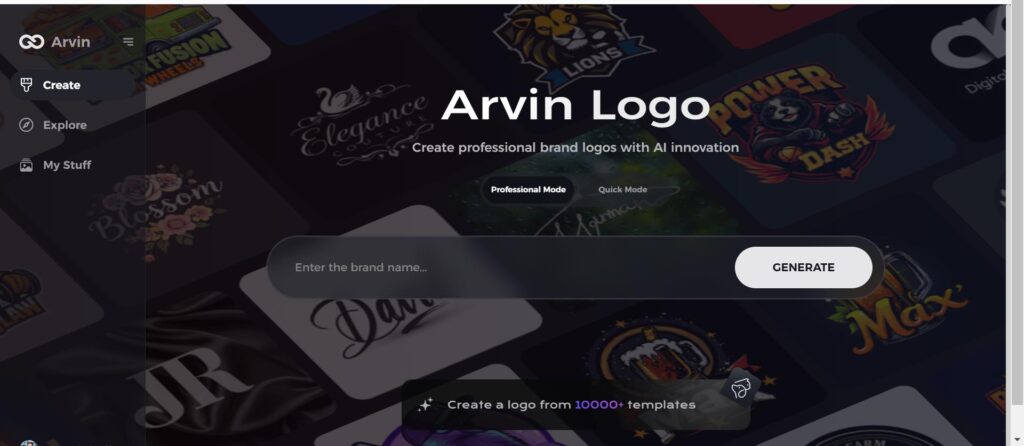
Step 2: Fill Up Your Company Details
Just enter the name of your company and pick its category and ask for transparent logo. All the details enable the AI to find the designs that would serve your needs and are representative for your company.
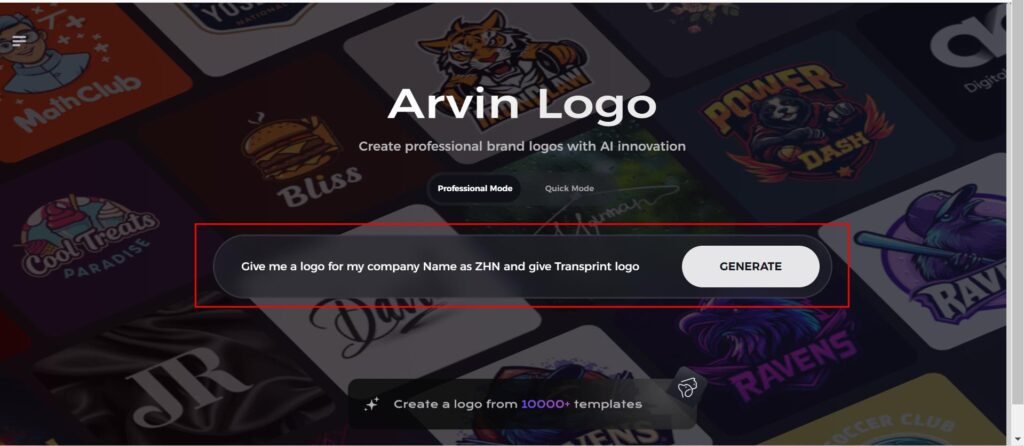
Step 3: Choose Your Industry
Pick an industry that best suits your business. This process guarantees the AI is making styles and themes that align best with your brand’s core value and niche in the market.
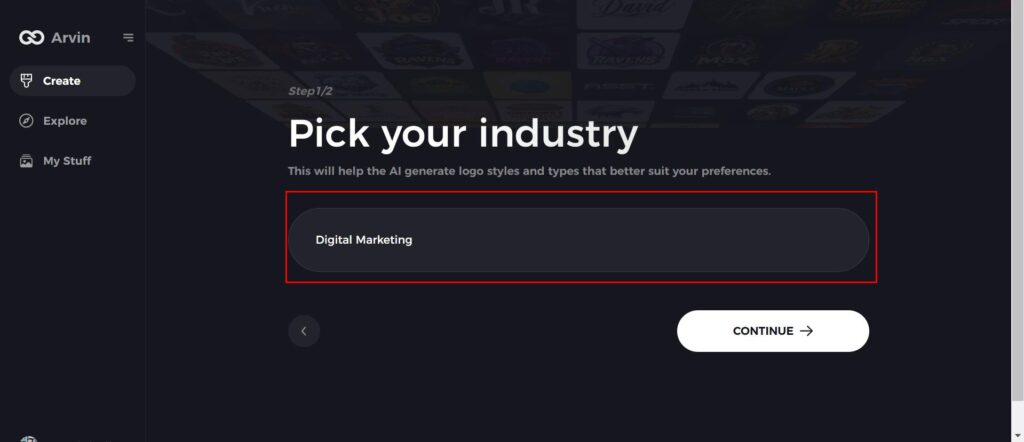
Step 4: Style Select
Pick a design style from the available ones. Leave it to “no style” if you’d want the AI to surprise you. The selected style shall provide a guideline for the final logon designs created.
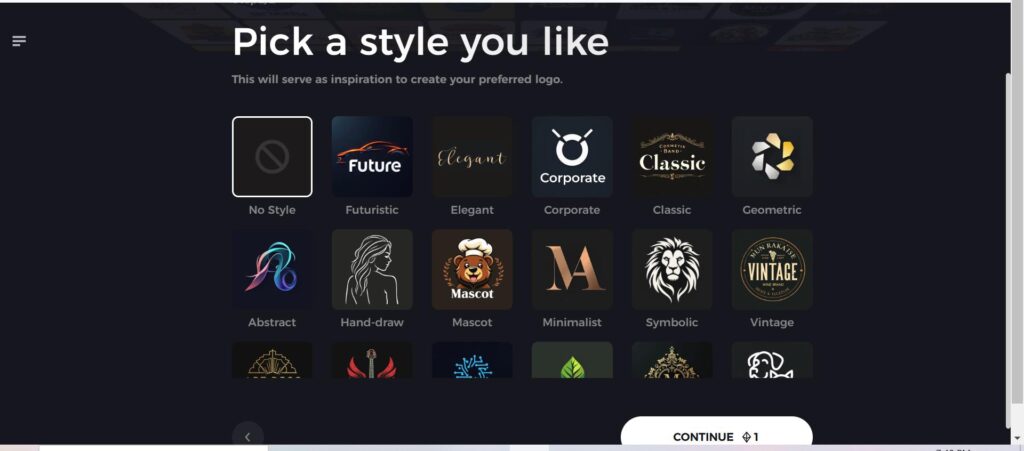
Step 5: Explore Logo Concepts
Arvin AI will produce different types of logo designs according to the information provided. Simply scroll through the suggestions for a design that matches your brand identity.
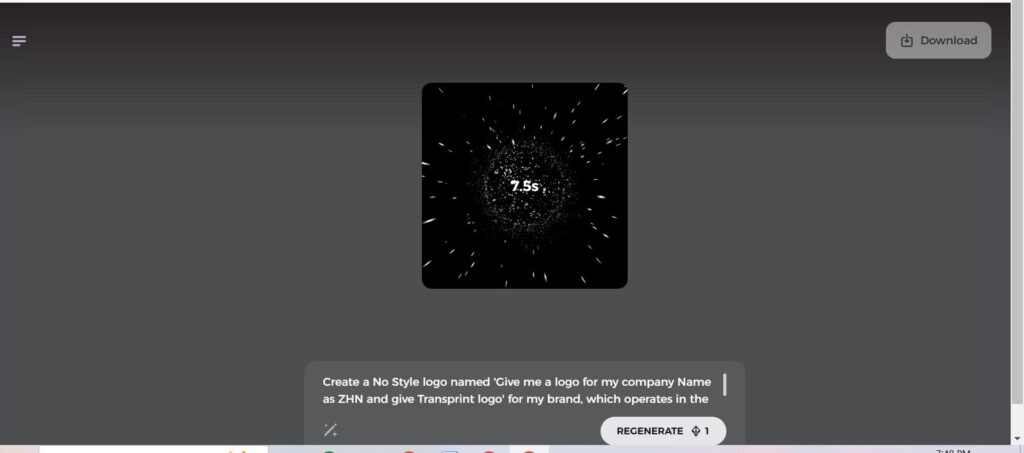
Step 6: Finalize the Logo
Fine-tune the chosen logo by adjusting colors, fonts, and icons to meet your brand personality and aesthetic. This way, your final logo is perfect and completely in line with your brand’s personality and style.
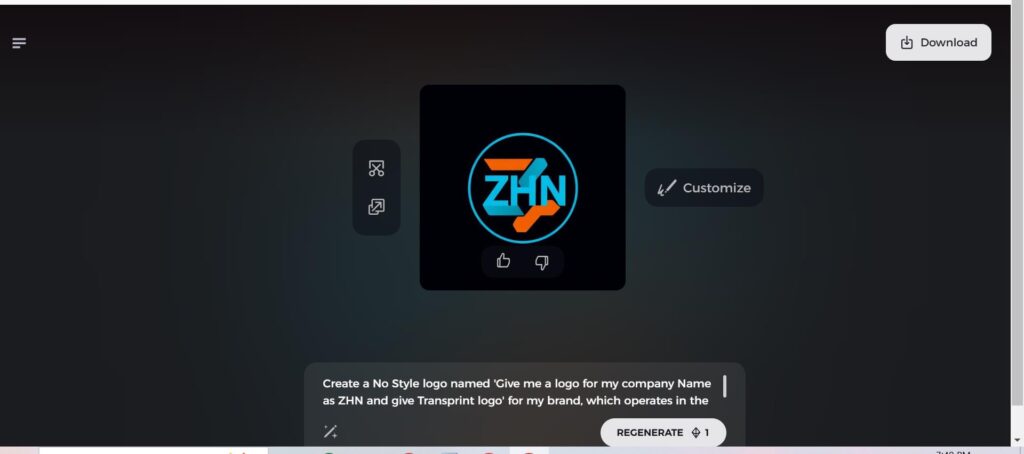
Step 7: Download Your Logo
Once satisfied with your final design, download your logo in versatile formats such as PNG or SVG that would be perfect for various media. Websites, social media, print, and so much more-these logos will give a professional look across every platform.
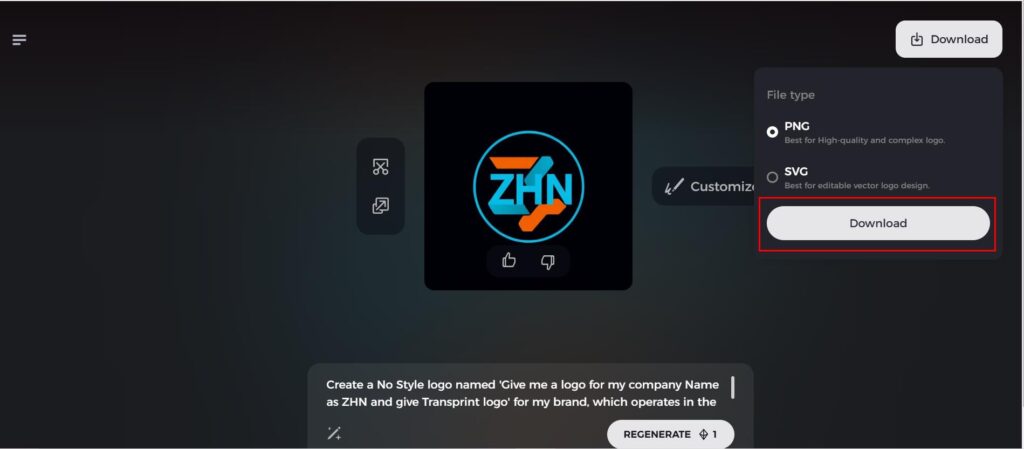
Conclusion
Brochures remain a vital part of the marketing plan because they can provide a company’s message to potential customers in an interesting, visual way. The business world enables companies to give their message and products and services and the essence of what is a brochure company through its various types of brochures, purpose, and key design elements. Employing the contemporary tools like Arvin AI, the making can be achieved in a much easier and smoother way. Thus, businesses can achieve highly professional and impactful brochures in less time.
FAQs
What is the principal objective of a brochure?
A brochure is supposed to inform and convince a customer regarding a company’s products or services by using minimum text and fabulous visuals.
How does a trifold differ from a bifold?
A trifold what is a brochure is folded twice, thereby bringing about six panels, while the bifold gets folded once resulting in four panels.
Does Arvin AI assist me in designing a brochure?
Yes. Arvin AI provides tools that help in the generation of content images and editing all to make creating a brochure not so time consuming.
What are advantages of digital versus printed brochures?
Digital brochures are cost-effective, shareable, and can be used with interactive elements, while printed brochures provide a tactile experience.

